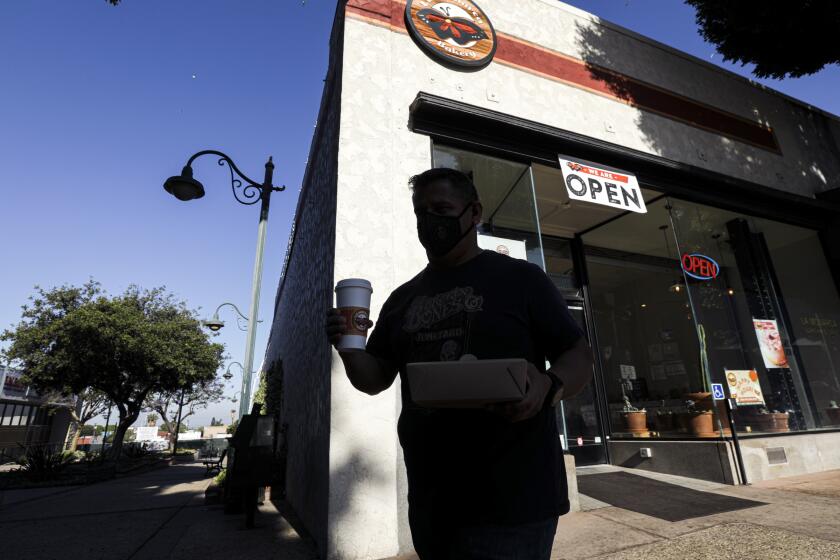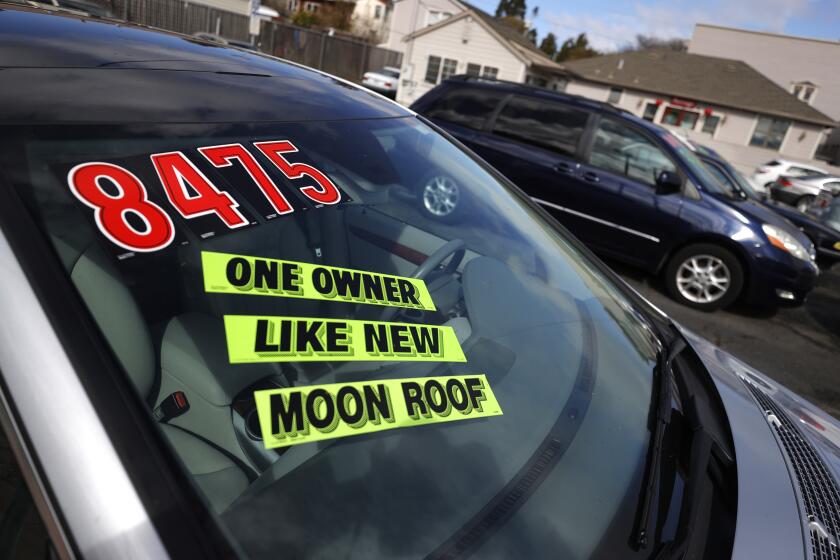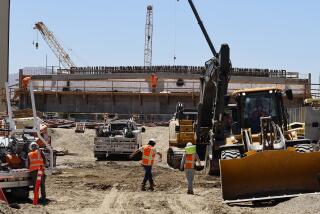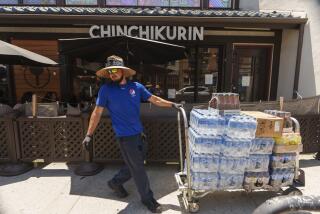‘Hungry to celebrate being alive’: California reopening fuels job growth
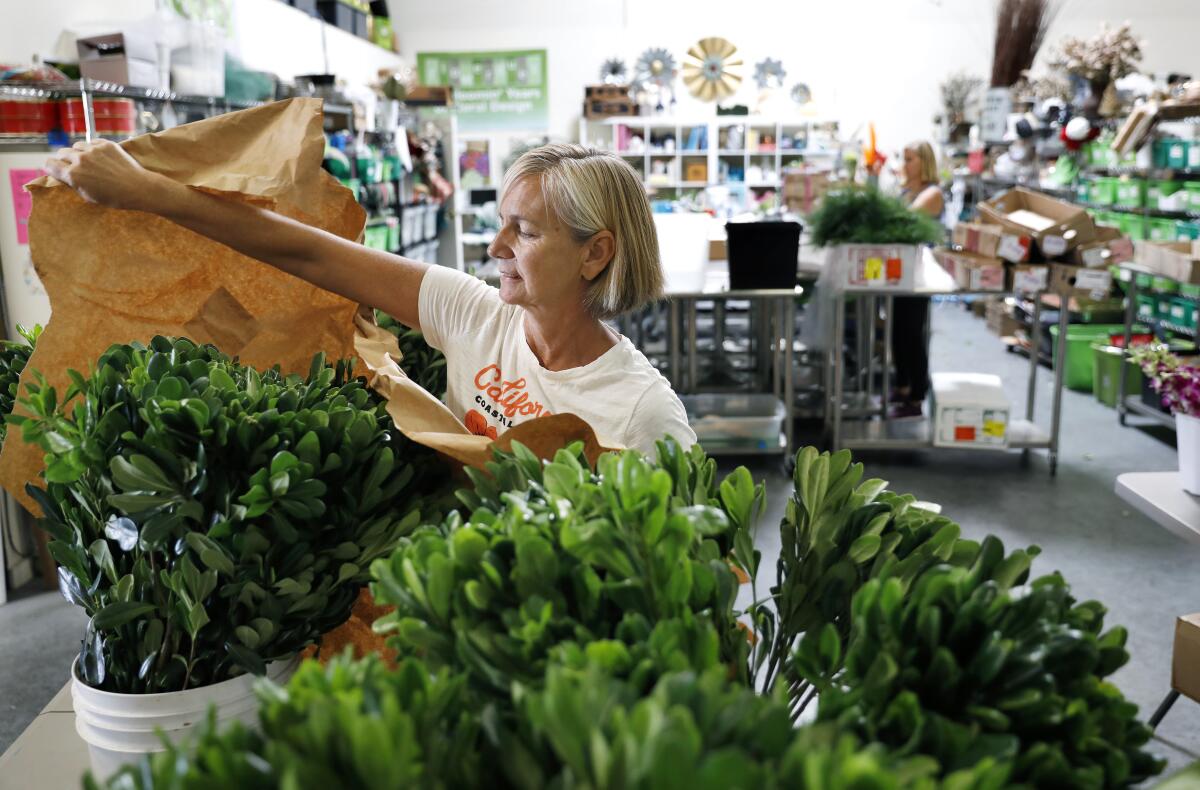
- Share via
California has added jobs at a torrid rate since the beginning of the year, but the state’s economy has a long way to go before it recovers its pre-pandemic prosperity.
May was the fourth month that Golden State payrolls grew by more than 100,000 positions — a faster post-recession rate than in any previous recovery.
Employment grew to 16.35 million jobs, but just 51.8% of the 2.7 million lost in March and April 2020 had returned as of last month, state officials reported Friday.
“A full California labor market recovery from this pandemic is still likely several years away,” said Scott Anderson, an economist with Bank of the West in San Francisco. “Even with stepped-up job growth, California has been unable to close the yawning unemployment gap with the nation.”
The Golden State’s jobless rate fell slightly last month, to 7.9% from a revised 8% in April. It was a vast improvement from a 16% peak in April 2020, but that rate was considerably higher than the pre-pandemic rate of 4.3% in February 2020.
Unemployment in Los Angeles County, which is still suffering from the loss of international tourism and the slow recovery of entertainment industry jobs, was stagnant at 11.1% in May, the same as in April.
Nationwide, unemployment stood at 5.8% in May and the U.S. had recovered 66% of the jobs it lost during the pandemic.
Still, many economists are optimistic that with expanding vaccinations and the lifting of restrictions on California businesses this week, the labor market will accelerate.
“We are emerging from the scourge of COVID-19,” said Lynn Reaser, an economist at Point Loma Nazarene University in San Diego. “With California’s economy fully open as of June 15, job prospects for the rest of the year are very strong.”
Flower Duet, a floral design company in Torrance, rode the pandemic’s roller-coaster economy and is just now poised for a return of its once-thriving events business.
Jobs will come back and the state’s economy will recover faster than the nation’s, a UCLA forecast says, led by consumer spending, tech jobs and home-building
When the pandemic hit, “We had to throw out thousands of dollars worth of flowers,” recalled Casey Schwartz, co-owner of the company with her sister Kit Wertz.
The sisters had been gearing up to decorate about 70 weddings and 60 corporate events in 2020. Almost all were canceled.
But Wertz and Schwartz pivoted. Their in-person flower arranging workshops had previously attracted about 240 people a year. They expanded them online and more than 2,000 people signed up over the last year.
Last month, hotels and other venues had yet to welcome back events. But this week, the sisters were busy arranging flowers for a large wedding. “People are hungry to celebrate being alive,” Schwartz said.
In May, California’s leisure and hospitality industry added the most workers — 62,300 — with gains in restaurants, bars and hotels, as well as entertainment and recreation businesses. But the hard-hit sector is still down more than 517,000 payroll jobs since the pandemic hit.
Education and health services added 16,500 workers. Information gained 11,200 jobs, mainly in motion picture and sound recording companies.
Construction lost 1,600 jobs, more than any other sector, mainly due to losses in commercial building. But lumber prices, a lack of buildable land and labor shortages could be weighing on residential payrolls too, Anderson said.
Regionally, Northern California’s technology-rich economy continued to outshine the rest of the state. May unemployment was 4.6% in San Mateo County, 4.7% in Santa Clara County and 5.1% in San Francisco.
Joblessness was at 5.9% in Orange County, 7.2% in Riverside County and 7.3% in San Bernardino County.
About 48% of California residents are fully vaccinated. After falling in the spring, inoculation rates have risen with expanded neighborhood distribution and Gov. Gavin Newsom’s “Vax for the Win” program offering cash, vacations and event tickets to the newly vaccinated.

The lifting of many COVID-related restrictions on physical distancing and capacity at businesses, and new rules allowing vaccinated workers and customers to go unmasked, is expected to further buoy the economy.
”It feels like a giant step towards returning to normalcy,” said Lee Braun, chief executive of Perspire Sauna Studio, an Orange County franchising company. “It allows our guests and team members see each other’s faces to communicate clearer.”
Perspire had shut down for two months in March of 2020, laying off 35 employees at four Orange County locations. “It was a dark time,” Braun said.
But once they reopened, with COVID-19 still spreading, the sauna business boomed. “Health and wellness has been front and center,” he said. “It’s what people are still looking for.”
Last month, Perspire’s California studio revenue was up 64% from its pre-pandemic level and payrolls grew to 52. Since early May, the company has signed a dozen new franchisees across the country.
“I don’t see that slowing,” Braun said.
Still, many small businesses have closed and, overall, small-business revenues are down 28.7% since the start of the pandemic.
“The small-business economy remains decimated,” said Michael Bernick, a former director of the state’s Employment Development Department. “There’s been no significant improvement since the start of 2021.”
One indication that California’s recovery is still lagging behind came as the state this week reported a jump in workers filing for first-time unemployment.
Last week’s 68,600 new claimants represented more than 17% of U.S. filings, although the state accounts for 11.7% of the nation’s civilian labor force. That compares with about 44,000 a week in the two months before the pandemic.
As businesses seek to bring back workers, UCLA economists warned in a forecast this month that the recovery will be more uneven than in previous recessions, given how abruptly and drastically it devastated the economy.
A turbocharged economy and rising wages are adding to pricing pressures. Some warn of a dangerous inflationary psychology.
Job postings in the state have returned to pre-pandemic levels, according to Opportunity Insights, a Harvard University research group. Still, 1.49 million Californians were counted as unemployed last month.
State unemployment insurance, along with a federal $300 weekly supplement, has enabled many Californians with lingering health concerns and child-care responsibilities to delay rejoining the workforce.
“There is going to be an adjustment period,” said Occidental College economist Mary Lopez. “Some workers are still dealing with child-care issues, others have decided to change career paths.
“If employers want to attract workers, they need to provide flexible work arrangements and higher wages.”
With the pandemic waning, Californians who receive unemployment benefits will have to show next month that they are looking for work, a requirement the state waived last year when COVID-19 kept people indoors.
May’s employment data are based on two federal surveys taken in the second week of the month. Payroll job numbers are based on a survey of 80,000 California businesses. The unemployment rate comes from a separate survey of 5,100 households.
More to Read
Inside the business of entertainment
The Wide Shot brings you news, analysis and insights on everything from streaming wars to production — and what it all means for the future.
You may occasionally receive promotional content from the Los Angeles Times.

